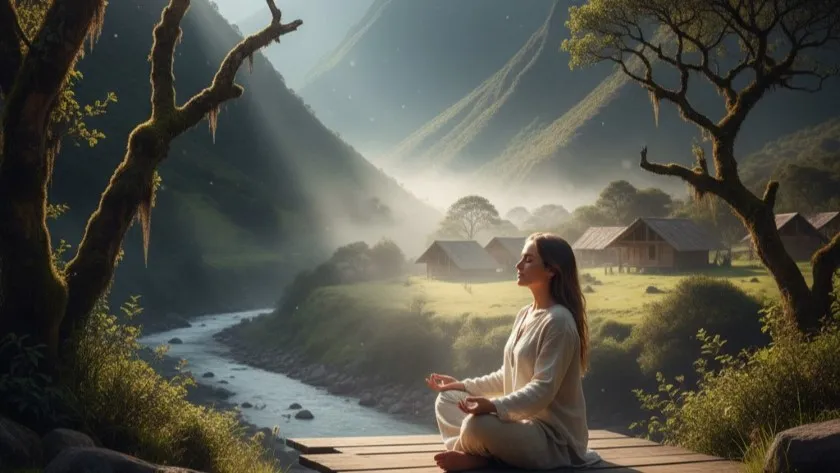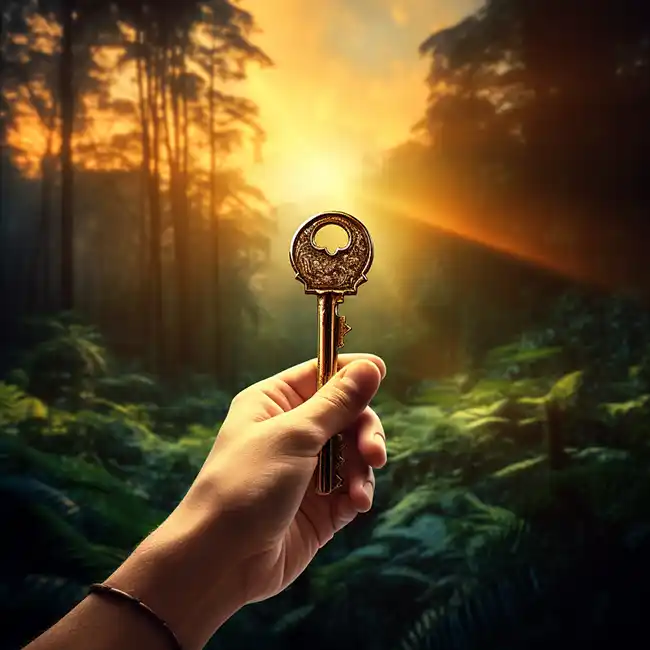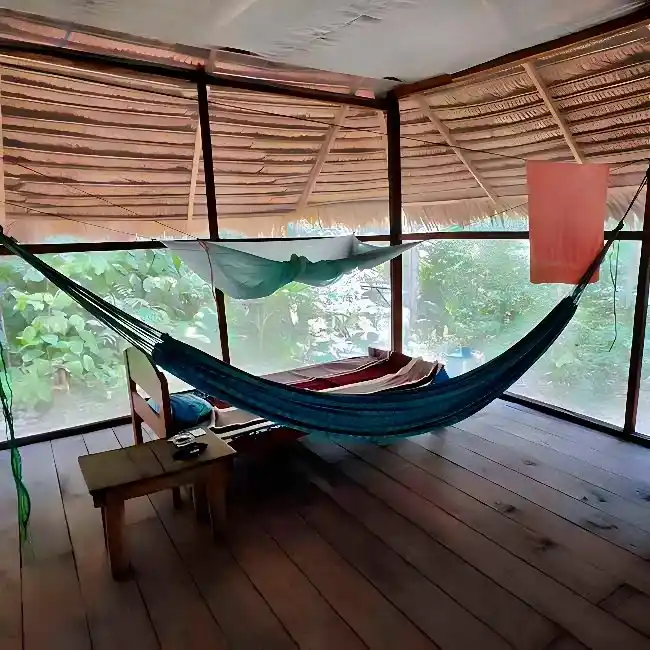What is a Silent Retreat and Why It Matters
A silent retreat is a practice of temporary solitude and silence where participants consciously give up conversations, gadgets, and external distractions. The main goal is to restore attention, reconnect with the inner self, and free the mind from constant informational noise.
Unlike a vacation or a spa, the value of a silent retreat is not in external entertainment but in creating a space of silence where one can truly hear oneself.

Silent Retreat and Vipassana: What’s the difference?
- Silent retreat is a flexible format: silence, minimal stimuli, mindfulness practices, walking meditations, nature observation.
- Vipassana is a specific Buddhist technique with a strict 10-day schedule and intensive meditation protocol.
How a silent retreat is structured (example of a day’s programme)
Each centre has its own organisation, but the structure is roughly as follows:
6:00-7 :00 morning meditation (sitting or moving)
7:30-8:30 breakfast in silence
9:00-12:00 mindfulness practices: breathing, concentration on the body, walking in silence
12:30-13:30 lunch
14:00-16:00 individual work: reading spiritual texts, journaling, contemplation
16:30-18:00 meditation
18:30-19:00 dinner
20:00-21:00 evening session: meditation or relaxation practice
21:30 silence, sleep
Important: gadgets and books not related to the practice are usually surrendered to preserve the purity of the experience.
Benefits and limitations: what the research confirms
Possible positive effects:
- Reducing stress levels;
- improved concentration and memory;
- normalisation of sleep;
- increased emotional stability.
According to the American Psychological Association, meditation and mindfulness practices are scientifically proven to reduce stress, improve mental health, and enhance emotional resilience【apa.org】.
What is important to understand:
- a silent retreat is not therapy or a substitute for mental health care;
- the effect depends on the willingness of the participant and the quality of the programme;
- there may be difficulties: boredom, anxiety, resurfacing of forgotten emotions.
Safety and contraindications
Who should avoid silent retreats:
-
Those with acute psychiatric conditions or panic disorders
-
Severe untreated depression
-
Individuals dependent on medication, alcohol, or drugs
-
People with unstable chronic conditions in flare-up phase
The role of the facilitator:
Facilitators provide a safe environment, support participants in crisis, and remain accessible throughout the retreat.
A study published in JAMA Psychiatry showed that MBSR was as effective as the antidepressant escitalopram in treating anxiety disorders【jamanetwork.com】.
Preparation Checklist: 7 Days Before a Silent Retreat
-
Stabilize your sleep schedule (wake up and go to bed at the same time).
-
Reduce caffeine, sugar, and alcohol intake.
-
Limit screen time, introduce “phone-free evenings.”
-
Set a clear intention: why am I going and what do I want to explore?
-
Inform family and friends you will be offline.
-
Pack essentials: comfortable clothes, journal, personal medications.
-
Mentally prepare for possible discomfort.
Integration after the silent retreat: a 14-day plan
- Keep a diary and write down the thoughts that arose in silence.
- Gradually bring back social contacts without overloading yourself.
- Limit screen time, keeping “islands of silence” in the day.
- Use short practices: 5-10 minutes of meditation in the morning and evening.
- Repeat the retreat in 6-12 months to consolidate results.
Modern research confirms the long-term effects. For example, a meta-analysis by Knudsen and colleagues (2023) showed that MBSR programmes consistently reduced stress and anxiety, improved sleep and emotional stability【sciencedirect.com】.
Silent Retreat in Peru: The Format of “Home of Ayahuasca”
At our centre, silence does not exist on its own, but becomes part of the deep process of an Ayahuasca retreat. This approach helps not only to take a break from the information noise, but also to open new levels of awareness.
Benefits of the “Home of Ayahuasca” format
- Synergy of Silence and Plant Work
In silence, the experience of interacting with the plant is heightened: there are no external distractions, stopping the mind helps to open the intuitive and bodily experience, perception becomes clearer. - Flexible Duration
We tailor the length of the retreat to the level of preparation: 3 days for a gentle immersion, 5-7 days for a deeper experience, and longer for experienced participants ready for intensive work. - Nature of the Amazon Jungle
The forest itself becomes an ally. The sounds of the jungle replace the usual noise of the city and support the process of inner purification. This is a rare experience that cannot be replicated in an urban setting. - Support from an experienced team
Experienced facilitators who have completed their own retreats with plants are on hand throughout the retreat. This allows the participant to focus on their path knowing there is support around them. - Customisation
Depending on the participant’s condition, goals and experience, we can integrate days of silence into the main programme or do a full ‘silence retreat’ with a plant. This flexible format allows for a gentle in and out of the practice. - Deeper integration of experience
By combining silence and plants, transformations become more sustainable: realisations that come in silence are easier to retain and apply in everyday life.
Who this format is suitable for
- New to the practice
If you are just taking your first steps in meditation or working with traditinal Plant Medicine, the 3-day silence format will be a gentle and gentle entry into the experience. It is an opportunity to try how silence and the plant work together without being overwhelming. - Experienced Practitioners
For those who have been on retreats before or have experience with spiritual practices, 5-7 days or more will allow for a qualitatively different level of awareness. Silence becomes a tool to stop the inner dialogue and anchor the experience of interacting with the plant. - Those looking for a complete reboot
People in a state of overwork, stress or information overload especially appreciate the combination of jungle, silence and plants. This format helps to revitalise and release accumulated tension. - Those going through a crisis or important transition
Periods of change, such as divorce, job change, moving, bereavement, require space for silence and rethinking. Here you get a safe environment for inner work and support, without the pressures and clutter of the outside world.
What the participant gets as a result
- Clarity of mind and perception
Silence helps you switch off the flow of external information and notice your own thoughts and reactions. The experience with ayahuasca enhances this process, allowing you to see life from a new perspective. - Emotional Release
In the safe atmosphere of the retreat, repressed emotions are lifted and gently lived out. The individual returns home calmer and more resilient. - Deep Insights
The connection of silence and plants accesses deep levels of memory and awareness. Many participants report unexpected solutions and answers to important questions. - Recuperation
Amazonian nature, a simple diet and silence regime give the body and nervous system a rare opportunity to completely reboot. - Stress Resilience
A silence retreat develops mindfulness and awareness, which helps you cope more easily with everyday challenges, give in less to irritation and find inner support more quickly.
Frequently Asked Questions (FAQ)
How long does a silent retreat last?
Usually 3 to 10 days. At our centre it is 3, 5 or 7 days, with the option to extend the programme.
Is it possible for a beginner?
Yes, especially in a 3-5 day format with instructor support.
What is the difference between a silent retreat and vipassana?
Vipassana is a Buddhist practice with a rigid protocol. A silent retreat is more flexible and adapted for the modern person.
Can I speak at the retreat?
No, except when asking the facilitator for help.
Are there any contraindications?
Yes: severe mental disorders, crises, severe chronic illnesses in exacerbation.
What should I bring?
Comfortable clothes, warm clothes for the evening, notebook and pen, personal hygiene products.
Conclusion
A silent retreat is not a rest in the usual sense, but an inner work. Silence helps to sharpen perception, hear oneself and restore inner balance. In the Amazonian context, this practice takes on a special depth: nature carefully supports the process.If you are looking for a reboot and a safe space for inner search, a silent retreat at Home of Ayahuasca could be your step towards a new stage of life.
To find out more or book your participation, contact us via WhatsApp or Telegram, or fill out the Retreat Application Form.
Information you may be interested in:
Testimonials from our retreats
Bobinsana: Plant Medicine that helps to combine Power and Love
Palo Santo uses and benefits. A sacred plant of South America


